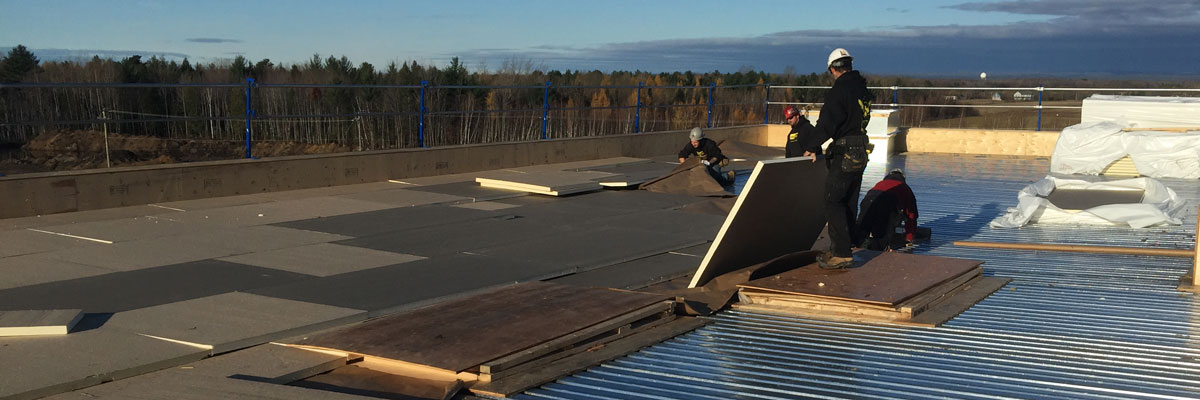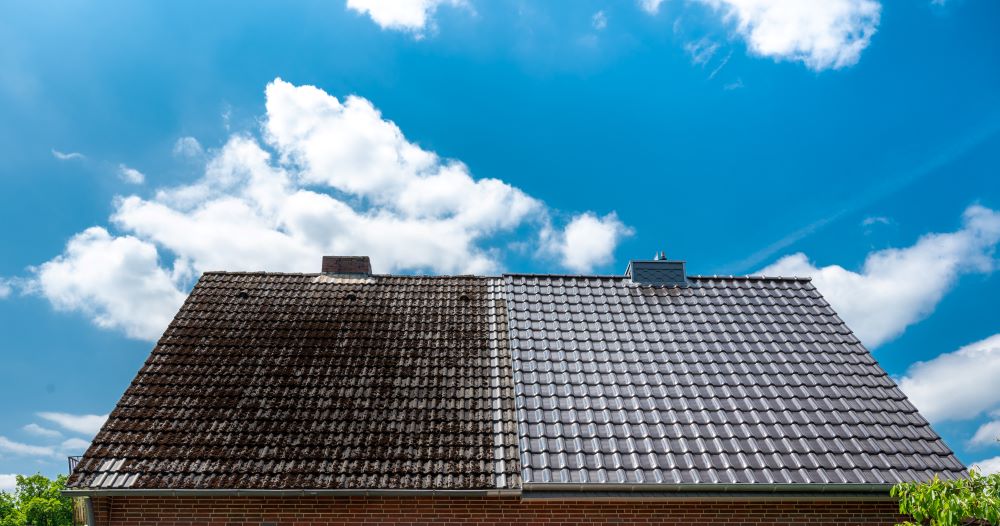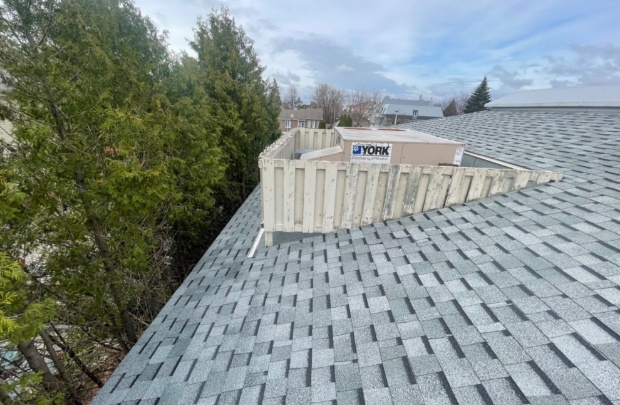Winter has arrived in Quebec, and beautiful white snow along with it. But picturesque winter scenes can quickly turn into a concern when you consider just how much damage snow accumulation on a roof can do.
Many businesses and residents of the province are unaware of the dangers linked with snow on a roof. In fact, few building owners know that just a few inches of snow piled on top of a roof can weigh several hundred kilograms.
Is your roof ready to handle that much weight in snow? The reality is that many roof structures are not built to withstand that much of a load, making a snow removal service essential.
How much snow can your roof support? What can you do to protect your roof from snow build-up in winter? Duro-Toit answers these questions below.
Snow accumulation on a roof: risks and dangers
Snow build-up can significantly add to the weight borne by your roof structure, especially when it is partially melted and wet. An overload can pose various risks and dangers:
- Roof collapse: The most serious risk is roof collapse. Older roofs and those not designed to support heavy loads can collapse under the excessive weight of snow.
- Leaks and internal damage: Snow accumulation on a roof can also cause leaks, leading water to infiltrate your building. Melting snow can seep through cracks or worn joints and cause long-term damage.
- Ice formation: When snow melts and refreezes, it can create ice dams that prevent proper water drainage and increase the risk of building damage.
How much snow can a roof hold?
According to the Insurance Institute for Business and Home Safety, most residential roofs in good condition can handle 20 pounds per square foot of snow.
Another factor that to consider when determining whether the snow on your roof is approaching this weight limit is the type of snow:
- Fresh snow: 10 to 12 inches of fresh snow equals about 5 pounds per square foot of roof. This means you can have a maximum snow load of 4 feet before the roof becomes strained.
- Packed snow: 3 to 5 inches of “old snow” equals about 5 pounds per square foot of roof. More than 1 foot of snow may be more than your roof can handle.
- Ice on the roof: A thin 1-inch layer of ice is equivalent to 12 inches of fresh snow! This is why it is so important to watch for ice dams and take care of them quickly.
We have put together at least one easy to use calculator to help you. Check it out in our article on how to calculate the weight of snow on your roof.
In a matter of seconds, you’ll know whether you need to clear your roof of snow or whether you can sleep soundly.
Snow weight accumulates quickly on flat roofs
Keep in mind that flat roofs are more susceptible to snow damage because the total weight accumulates faster. This is because melt water is more likely to freeze on flat roofs before it can drain off, contrary to pitched roofs.
Snow removal on flat roofs should be done more frequently to avoid serious structural damage.
What to do when snow starts to accumulate on your roof
To prevent snow from accumulating on the roof and avoid all the risks that this entails, you should commit to frequent snow removal. Snow removal is not a simple task and is often dangerous. Whoever is responsible for clearing snow from the roof should take all necessary safety precautions.
At Duro-Toit, we recommend contacting snow removal professionals if you have any doubts about your ability to safely remove snow from your roof.
Look for signs of roof damage
Sagging ceiling tiles or sprinkler lines, popping or cracking noises, blocked doors and windows, cracked walls or a leaky roof are all signs of an over-stressed roof.
Roof inspections are important
If you live in Quebec or anywhere where there is a lot of snow in winter, consider scheduling a professional roof inspection before the cold sets in. It’s best to confirm that your roof can handle the weight of the snow before it begins to fall.
And even if snowfall isn’t frequent where you live, it’s a good idea to contact an expert at least once a year to check the condition of your roof. Even rain or wind can cause problems if your roof is in bad shape.
Winter roof maintenance and preventive measure
Preventing snow build-up and maintaining your roof regularly will prevent damage and keep everyone safe during the winter months. Here are some practical tips from our Montreal roofers:
- Install snow barriers: Snow barriers or snow guards can prevent snow from accumulating unevenly on your roof and sliding off in large quantities.
- Use heating cables: Roof de-icing cables along gutters and roof edges can help prevent ice dams by making snow melt and drain off more quickly.
- Proper insulation and ventilation: This helps maintain an even roof temperature and reduces the risks of repeated melting and refreezing.
- Preventive snow removal: Consider removing snow from your roof to avoid excessive accumulation in the event of a heavy snowfall.
Safe rooftop snow removal with Duro-Toit!
With winter in full swing, you need your roof to be safe and functional. At Duro-Toit, we understand the importance of efficient, responsible snow removal.
Our team of experts is equipped to handle the challenges of winter snow removal and keep your flat or pitched roof in perfect condition.
If you need our services or have any questions, call us at (514) 755 – 8648 or fill out the form on our contact page.



